Order Coleoptera Subfamily Scolytinae Rank Species | Genus Xyleborus Higher classification Xyleborus | |
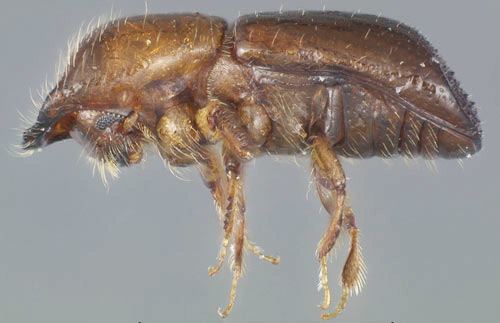 | ||
Similar Xyleborus, Beetle, Persea borbonia, Raffaelea, Bark beetle | ||
Redbay ambrosia beetle xyleborus glabratus
The redbay ambrosia beetle (Xyleborus glabratus) is a type of ambrosia beetle invasive to the United States. It has been documented as carrying the fungus that causes laurel wilt, a disease that can kill several tree species in the Lauraceae family, including redbay and avocado.
Contents
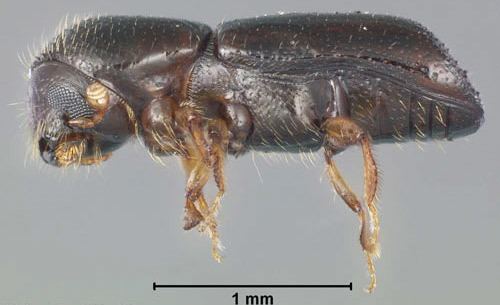
The beetle, first detected in the United States in 2002, is native to Asia and may have arrived in wood products, packing materials or pallets. Laurel wilt has been found in South Carolina and Georgia, and notably in Florida, where it has reached as far south as Dade County and as far west as Bay County. In 2009, state officials in Mississippi confirmed the positive identification of the disease in Jackson County. In 2011, it was confirmed as present in North Carolina and Alabama.
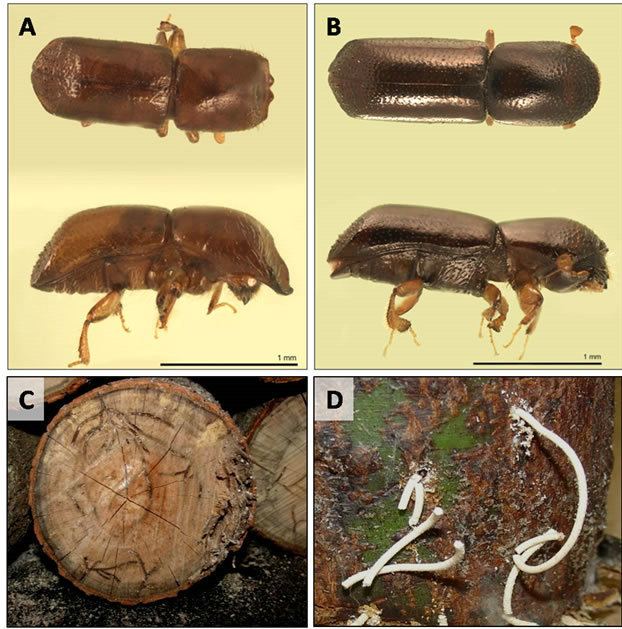
Adult
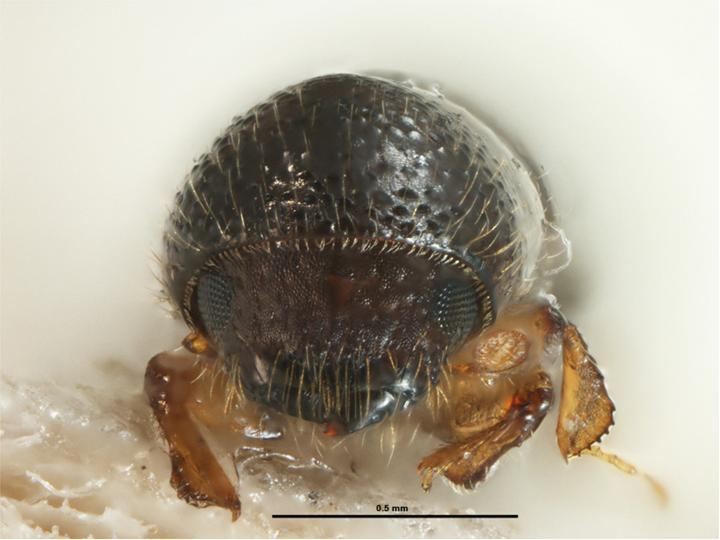
The redbay ambrosia beetle is a small, black or amber-brown, cigar-shaped beetle under two millimeters in length. The dorsal surface is mostly hairless and shiny when compared to other ambrosia beetles. They can be specifically identified by characters present on the elytral declivity, including its steep and convex shape when compared to other Xyleborus, and by the large size of indentations on the elytra.
Larvae
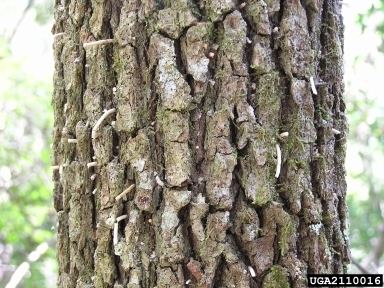
The larvae of the beetle are similar in appearance to others of the group, developing as a white and legless "worm" with an amber-colored head capsule.
Biology
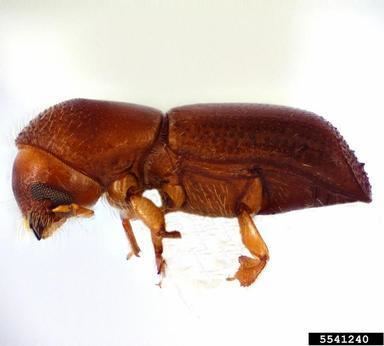
The redbay ambrosia beetle is believed to originate from Asia or southeast Asia. Males are haploid, smaller in size, and flightless. The beetle's biology is poorly documented, but presumed to be similar to that of other ambrosia beetles, with larvae and adults feeding on the symbiotic fungus it carries with it, and not the wood of the host tree. The spores of the fungus are carried in mycangia at the base of each mandible.
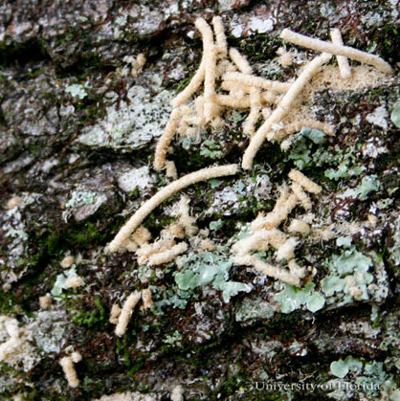
Larval development time takes from fifty to sixty days. Studied populations increase steadily in size until late summer and early fall without distinct population peaks, leading researchers to believe that there are overlapping generations with year-round reproduction for the insect.
History of expansion
Laurel wilt can spread in at least two ways: one is via the beetle's natural reproduction and migration. A second way is through the sale and transport of beetle-infested wood, a result of redbay's use as firewood and for outdoor grilling.
The beetle was first detected in the United States in 2002, in Port Wentworth, Georgia. It has been suggested that this insect was introduced to the country on the wood of packing crates. The significance of these detections became apparent when the beetle was linked to and identified as the vector of laurel wilt, a fungal disease that had been killing large numbers of redbay trees. The fungus grows throughout the xylem of the tree, preventing the flow of water and nutrients throughout the plant. Death can occur from four to eleven weeks after inoculation.
